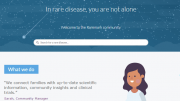The COVID-19 pandemic turned virtual congresses from a relatively rare occurrence to a must-have in 2020. While we saw some attempts at hybrid and in-person events in 2021, 2022 was the year that hybrid congresses and conferences finally became a mainstay across the medical and scientific communities. Although this format adds a layer of complexity for the organizers, it’s a win-win situation for presenters and attendees alike. I could dedicate an entire separate article to the benefits of hybrid congresses for the environment, attendee convenience, and budget alone!
With the shift to hybrid conferences, you can now watch sessions you missed on-demand and visit all posters on your own time. However, the large amount of data being presented and multiple simultaneous sessions can make it hard to focus the attendees’ attention. As a result, it becomes difficult to gather targeted feedback. For Pharma, getting all of their key opinion leaders (KOLs) in one room to get their thoughts on the new data presented during the congress can often prove difficult due to scheduling conflicts or some KOLs attending the conference virtually. Other healthcare providers (HCPs) may not attend at all due to time or financial constraints.
If you, like many other life science leaders, are struggling with coordinating, documenting, following up on, and disseminating clear, relevant insights from congresses, below are some tips on how to optimize congress information-gathering.
Virtual advisory boards
Preparedness is the key to any successful event. To prepare for the upcoming conference season, Pharma teams should consider engaging their KOLs and/or digital opinion leaders (DOLs) in virtual advisory boards. These can run months prior to the conference, as well as during and/or after for continuity. Advisors can be asked for their thoughts on how to best capture and disseminate conference data, the data they are most looking forward to, key takeaways from the conference, and more. Instead of just hosting a one-off advisory board meeting prior to the conference, hosting multiple touchpoints over time serves to create a more enjoyable experience, akin to serving a meal course-by-course rather than all at once.
Conference eHuddles
Prior to your congress or conference, take some time to first prioritize all live and on-demand sessions and divide these between your internal attendees or sponsored HCPs. During the congress, daily eHuddles can be hosted wherein attendees are able to add their notes and takeaways directly into a secure collaboration space in real time or after a short period of reflection. Virtual tools such as speech-to-text, combined with online community boards or asynchronous (over-time, anytime) discussion forums, are useful here to allow thoughts to be captured with minimal effort while on-the-go. Moderators can also ask a “question of the day” to stimulate discussion. Having features like daily digest emails will help participants keep track of their peers’ new comments and respond in a timely manner. This approach facilitates the gathering of precise and targeted feedback on data that is of special interest to the participants while allowing continued discussions over the following days.
Online debrief sessions
It is important to continue the conversation well after the congress ends, as some people need time to digest new information. Once your attendees are back in their clinic or office, they likely have limited time for attending live meetings. With their convenience and preference in mind, asynchronous touchpoints–scheduled approximately two weeks after the congress–are ideal for debriefing. This way, you can ensure that the information is still fresh in their minds while they have had sufficient time to process the data presented. Questions can be highly specific or broad and open-ended. To keep participants engaged, a variety of virtual collaboration tools can be used (think beyond just surveys and discussion forums).
Resource creation and dissemination
Many teams struggle not only with gathering insights from hybrid congresses but also with disseminating relevant takeaways to a broader audience. Here as well, virtual collaboration tools can help. There is no one-size-fits-all method, but one popular approach is KOL Ambassador programs wherein a few select KOLs attend the congress and summarize key abstracts of interest to HCPs from their country or specialty. Multiple custom outputs can then be created from these summaries, such as video vignettes, podcast episodes, slide deck summaries, infographic-style digital handouts, and more. These can be disseminated to HCPs unable to attend the congress or to the larger medical community via online community boards, gated HCP websites, medical association newsletters, and more.
A final tip
No matter which approach you choose, when it comes to hybrid congresses try to keep it simple and straightforward. That means using (ideally) a single platform and vendor for all related initiatives. It means being clear with your participants about what the objectives of the engagement are and what is expected of them. It means limiting back-and-forth emails or redundant web meetings by leveraging asynchronous collaboration tools. Finally, it means not forgetting about the human aspect and working with strategic and digital experts with extensive experience in bringing these programs to life.
By Natalie Yeadon, Co-founder & CEO, Impetus Digital





